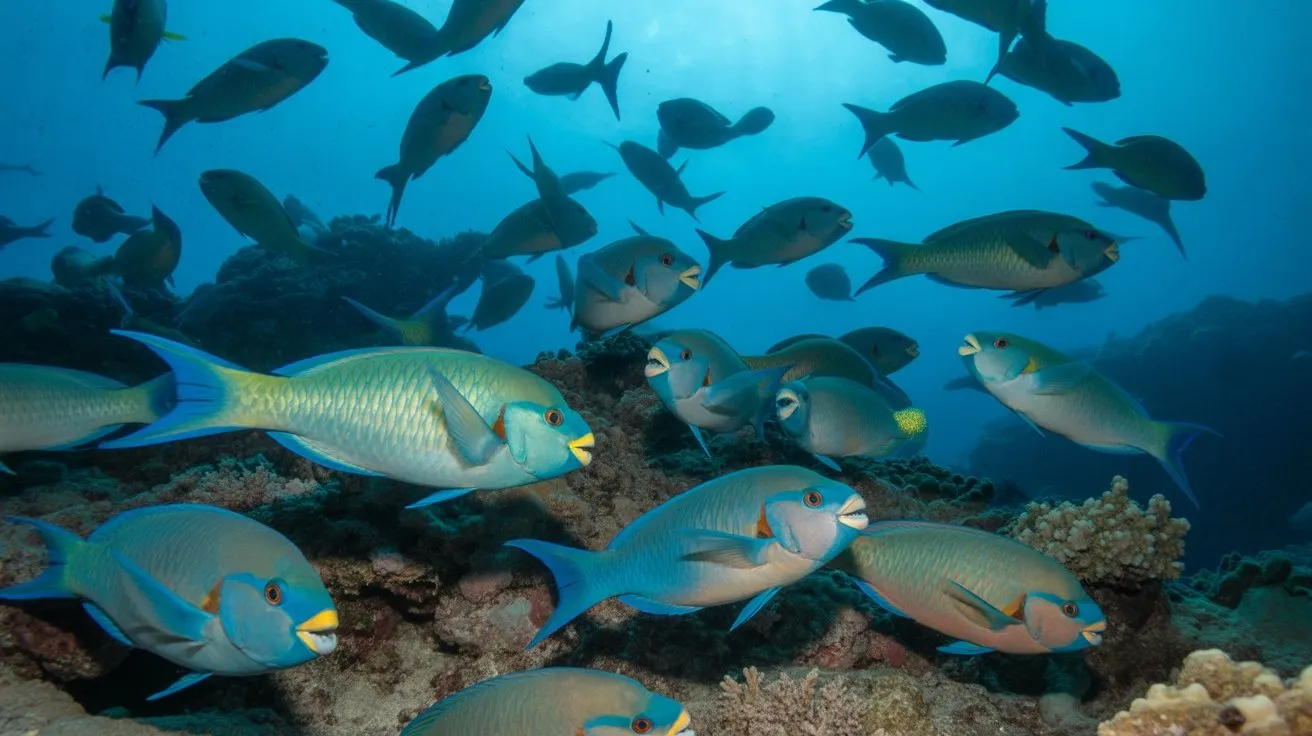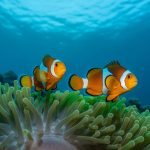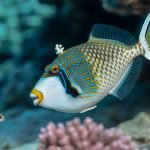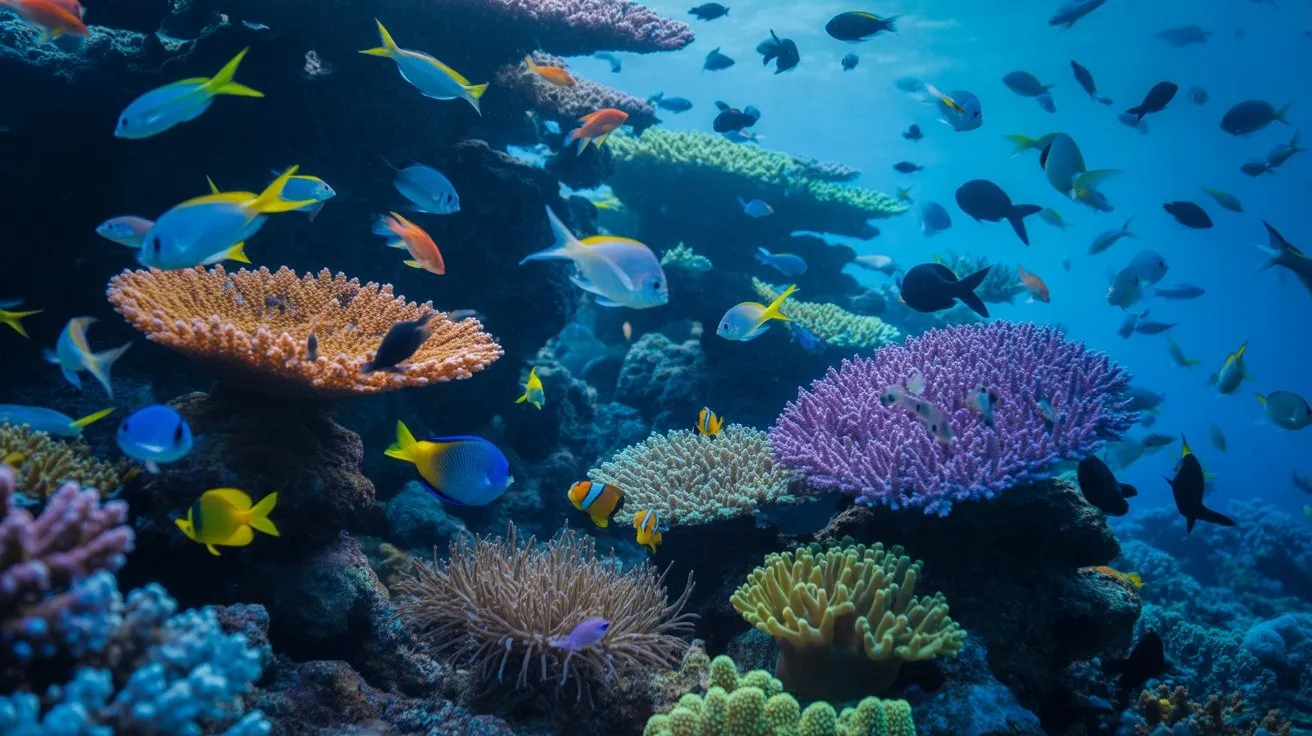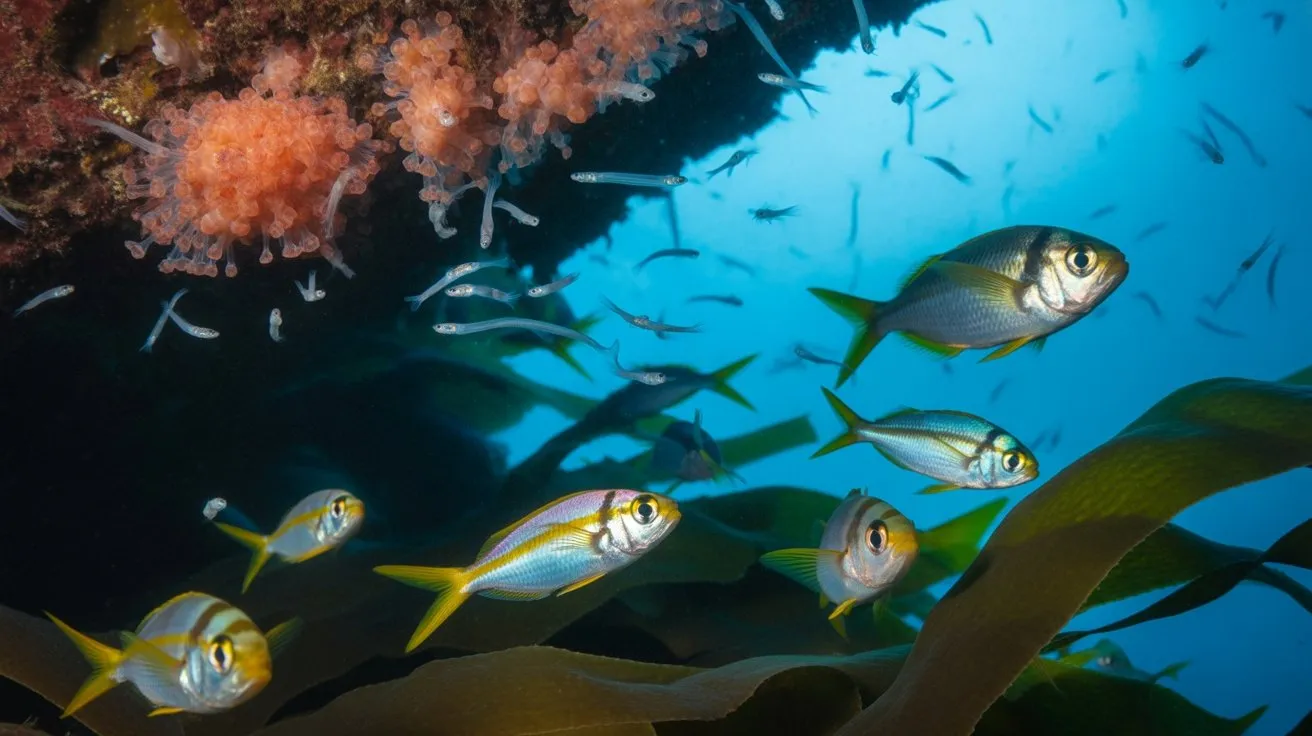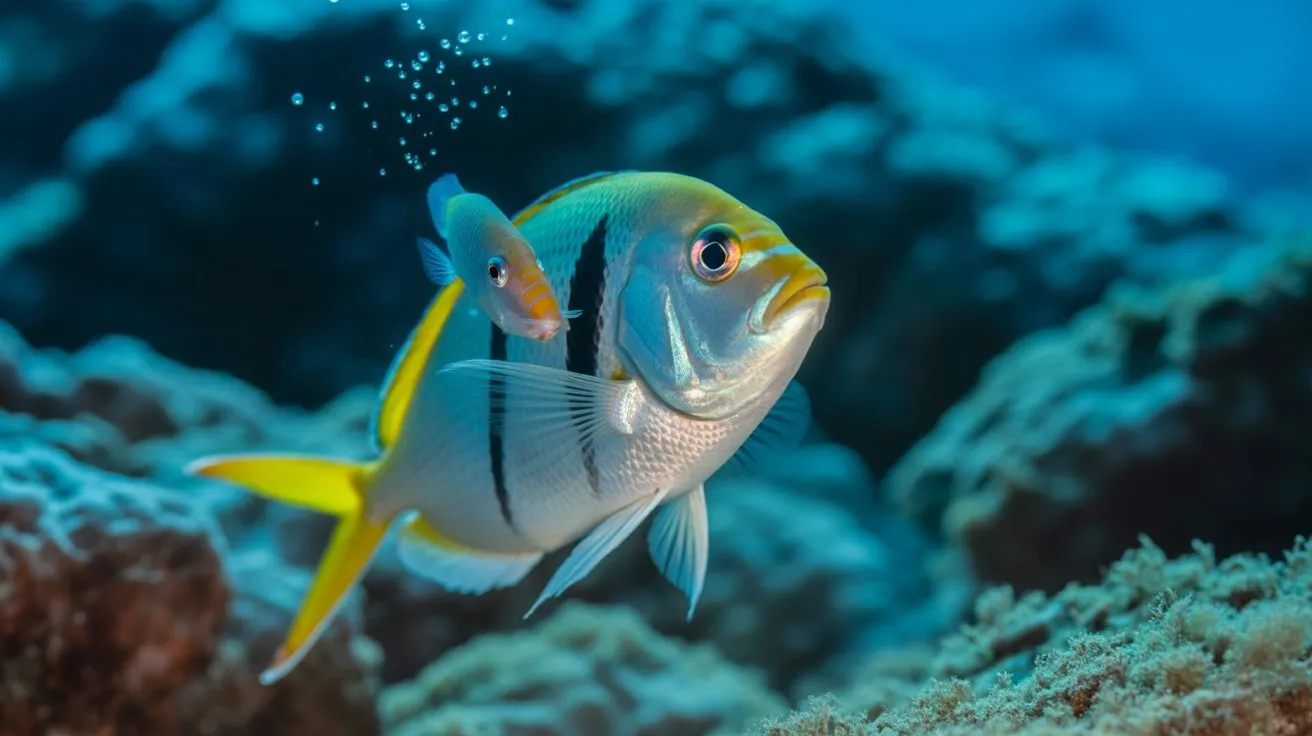You’ll discover that the theory positioning parrotfish as mere algae grazers severely underestimates their ecological significance. Recent bioerosion studies reveal these fish generate approximately 840 pounds of sand per individual annually through carbonate consumption. You’re witnessing ecosystem engineers whose beak-like teeth don’t just control macroalgal competition—they’re actively sculpting reef architecture. However, current population assessments suggest a 75% decline in key species, fundamentally altering reef dynamics in ways scientists are only beginning to quantify.
The Anatomy and Appearance of Parrotfish
Parrotfish exhibit distinctive morphological adaptations that enable their specialized ecological role as herbivorous grazers on coral reefs.
You’ll observe their beak-like dental apparatus, formed by fused teeth that create powerful grinding structures capable of scraping algae from coral substrates. Their pharyngeal mill consists of specialized teeth that pulverize ingested material with remarkable efficiency.
You’ll notice their robust body morphology, typically measuring 30-120 centimeters in length, with compressed lateral profiles optimizing maneuverability within reef environments.
Their scales display vibrant coloration patterns that change dramatically during ontogenetic development and sexual shifts.
You’ll find their pectoral fins positioned for precise steering, while their continuous dorsal and anal fins provide stability during feeding behaviors on vertical coral surfaces. Additionally, parrotfish play a crucial role in maintaining reef health by controlling algal growth, which supports coral vitality and biodiversity.
Feeding Behavior and Grazing Patterns
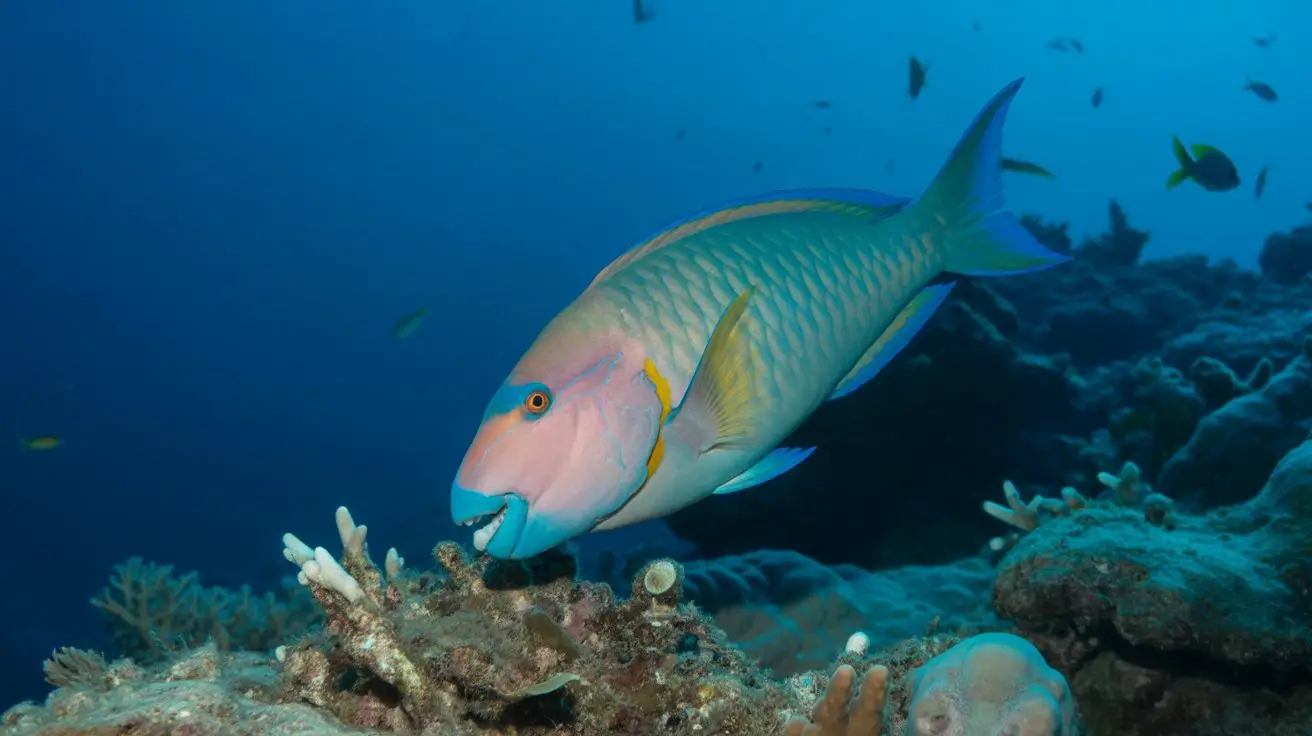
These morphological adaptations directly facilitate the complex foraging behaviors that define parrotfish as keystone herbivores in coral reef ecosystems.
You’ll observe diurnal feeding cycles where individuals consume 5-6 tons of carbonate substrate annually per hectare. Their scraping methodology targets epilithic algal matrices, removing approximately 1-2mm of coral surface per bite.
You’ll notice territorial species like Scarus vetula maintain consistent grazing territories of 100-200m², while schooling species exhibit nomadic patterns across reef zones. Bite rates average 1,000-2,000 per hour during peak feeding periods.
Their selective pressure on fast-growing algae prevents macroalgal dominance that would otherwise smother coral polyps. This continuous bioerosion and algal removal maintains ideal light penetration and substrate availability for coral recruitment and growth. Additionally, parrotfish play a critical role in maintaining biodiversity, which is essential for healthy marine ecosystems.
Sand Production and Beach Formation
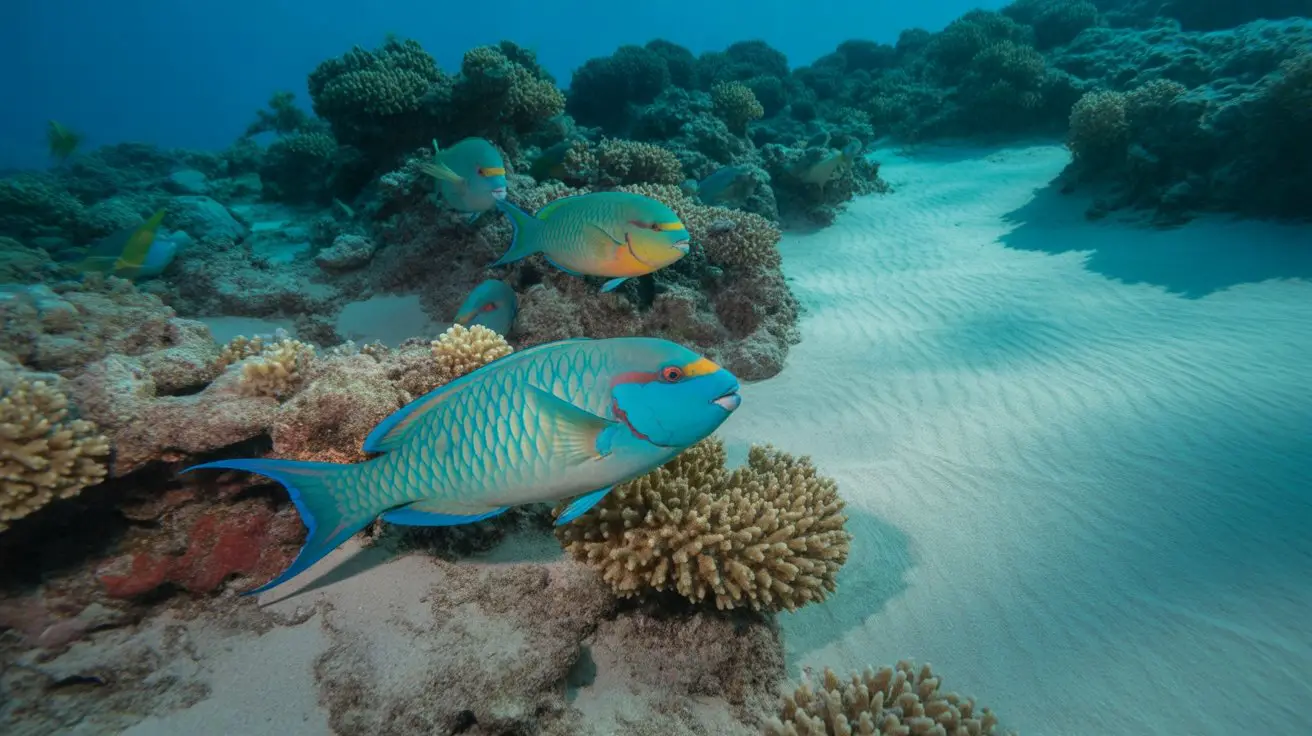
While continuously scraping coral surfaces for algae, parrotfish generate substantial quantities of carbonate sand through their digestive processes, producing an estimated 840 pounds of sand per individual annually.
You’ll observe this bioerosion occurring as pharyngeal mills crush ingested coral fragments into fine sediments. These calcium carbonate particles undergo mechanical breakdown within specialized grinding teeth, creating sand grains ranging from 0.1 to 2.0 millimeters in diameter.
You can directly link parrotfish activity to beach formation across tropical coastlines. Large parrotfish species contribute disproportionately to sediment production, with Bolbometopon muricatum generating up to 1,500 pounds annually.
This sand accumulates in lagoons and shallow waters, eventually forming beaches through wave action and tidal redistribution. You’re witnessing ecosystem engineering where parrotfish literally construct coastal geomorphology. Additionally, this process supports coastal protection by mitigating erosion and enhancing habitat stability for marine life.
Algae Control and Coral Health Maintenance
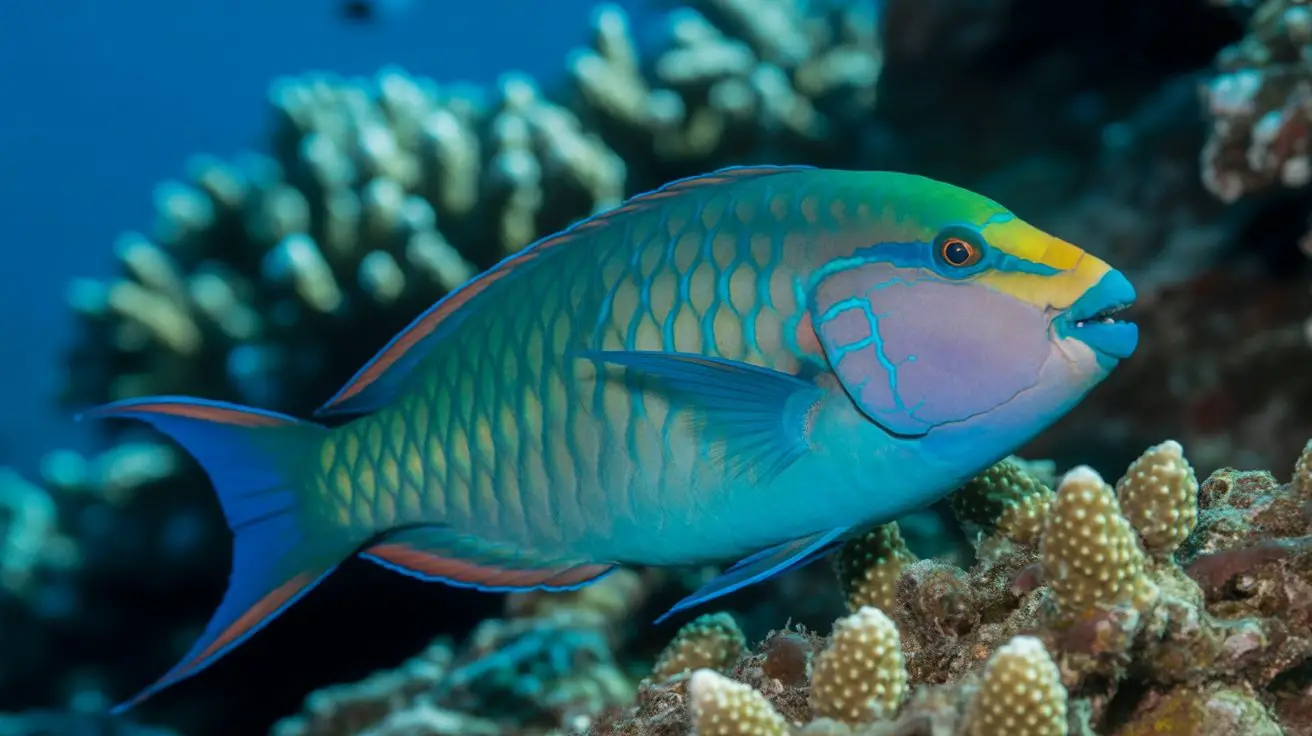
Beyond sand production, you’ll find parrotfish functioning as critical algae controllers that maintain coral reef health through intensive herbivory. You’re observing organisms that consume 2-5 tons of algae per hectare annually, preventing macroalgal overgrowth that would otherwise smother coral polyps.
| Parrotfish Species | Daily Algae Consumption |
|---|---|
| Stoplight Parrotfish | 90% of feeding time |
| Rainbow Parrotfish | 85% of feeding time |
| Queen Parrotfish | 80% of feeding time |
| Princess Parrotfish | 75% of feeding time |
| Redband Parrotfish | 70% of feeding time |
You’ll notice parrotfish selectively target fast-growing filamentous algae and cyanobacteria, creating ideal conditions for coral recruitment and growth. Their grazing maintains algae-coral equilibrium, ensuring light penetration reaches photosynthetic zooxanthellae within coral tissues, directly supporting reef ecosystem productivity and resilience. This herbivorous fish plays a vital role in regulating grazing dynamics, thus contributing to the overall health of coral reef ecosystems.
Parrotfish Species Diversity and Distribution
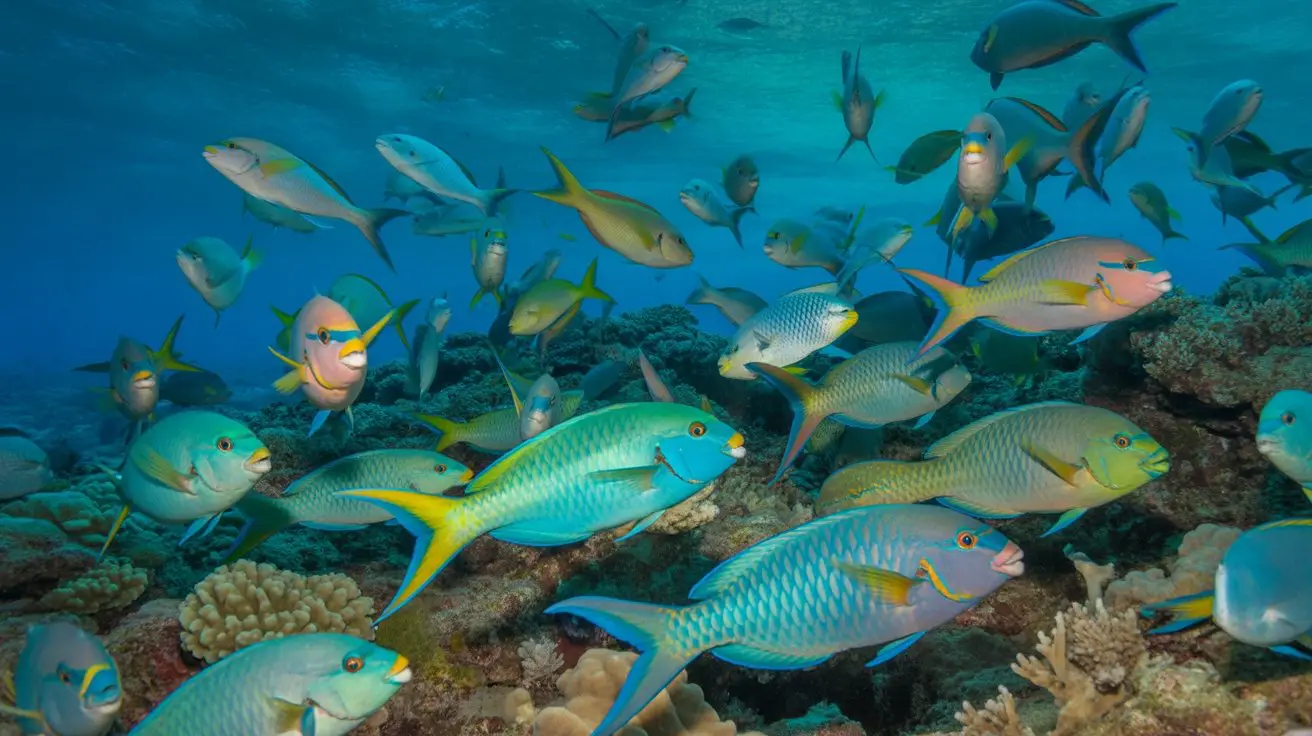
Although parrotfish exhibit remarkable ecological uniformity in their reef functions, you’ll encounter approximately 95 recognized species distributed across three genera—Scarus, Sparisoma, and Chlorurus—spanning tropical and subtropical waters from 30°N to 30°S latitude.
You’ll find Scarus comprises the largest genus with 52 species, while Sparisoma contains 15 Atlantic-endemic species, and Chlorurus includes 18 Indo-Pacific taxa.
Caribbean reefs host 14 species, contrasting with Indo-Pacific systems supporting over 60 species. You’ll observe pronounced endemism rates exceeding 40% in isolated archipelagos like Hawaii and Easter Island.
Size distributions vary dramatically—terminal-phase males range from 15cm in Scarus psittacus to 130cm in Bolbometopon muricatum.
Biogeographic patterns reflect tectonic history, with highest diversity concentrated in the Coral Triangle’s 1.6 million km² marine biodiversity epicenter.
Life Cycle and Reproductive Strategies
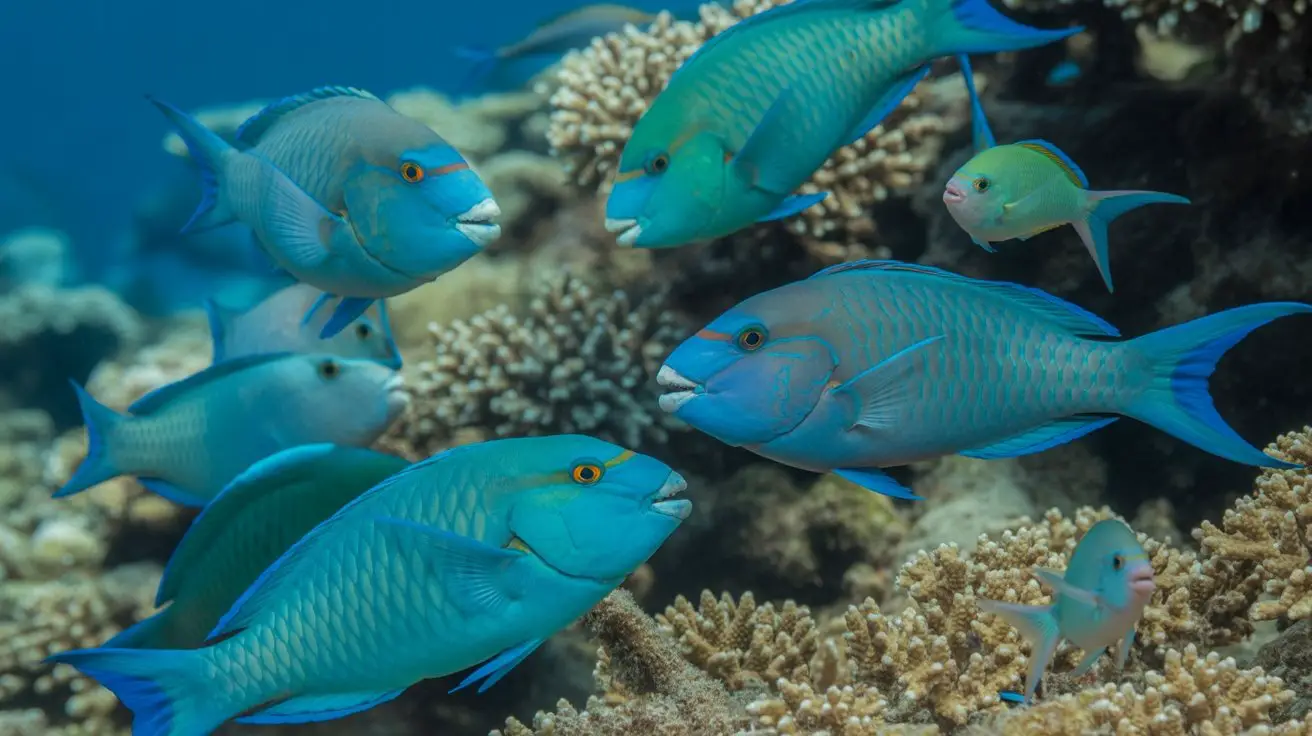
When parrotfish reach sexual maturity between 1-4 years depending on species, they’ll initiate one of the most complex reproductive strategies found among coral reef fishes—sequential hermaphroditism with elaborate social sex determination.
You’ll observe protogynous hermaphroditism, where individuals begin as females and transform into terminal-phase males under specific socioecological pressures.
The reproductive cycle follows three distinct phases:
- Initial Phase (IP): Juvenile coloration and female reproductive function with ovarian tissue development
- Transitional Phase: Gonadal restructuring from ovarian to testicular tissue over 10-21 days
- Terminal Phase (TP): Dominant male coloration with exclusive testicular function and territorial spawning behavior
You’ll find spawning occurs during lunar cycles, with group spawning in initial phases and pair spawning in terminal phases, optimizing fertilization success rates.
Threats to Parrotfish Populations
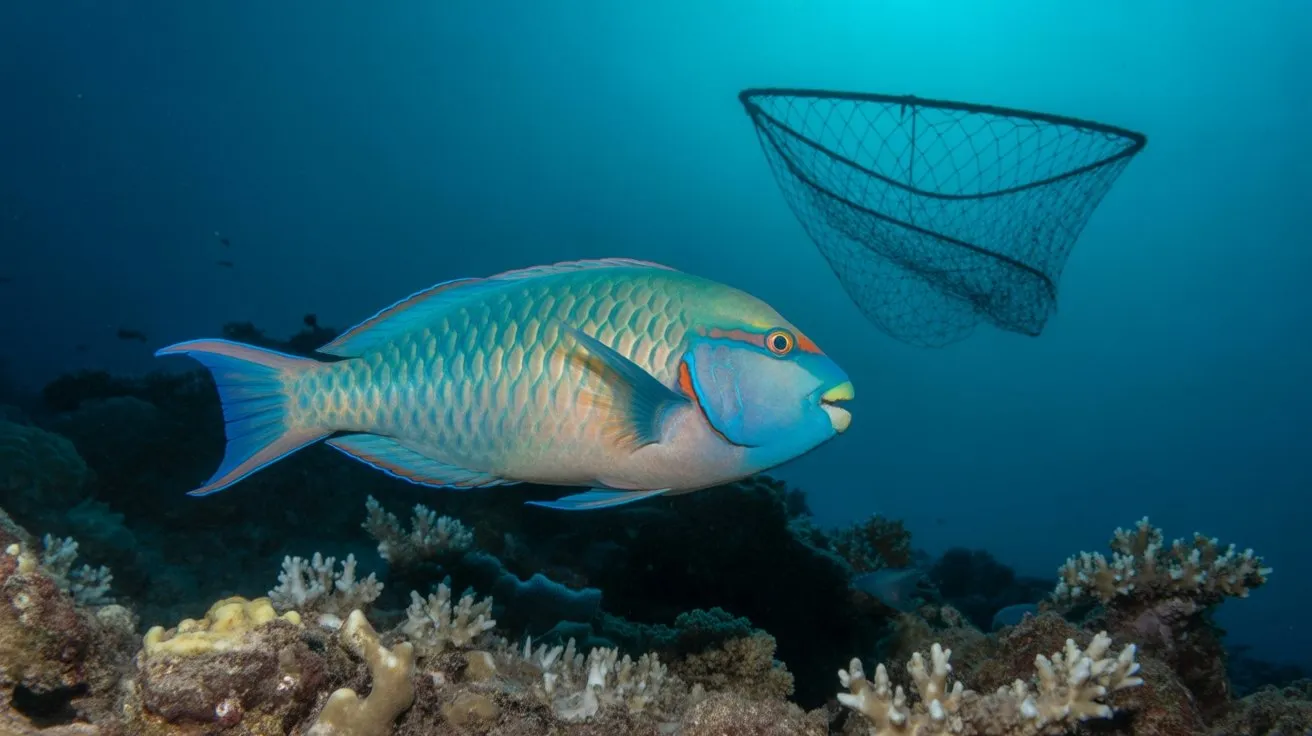
Despite these sophisticated reproductive adaptations that have enabled parrotfish to thrive for millions of years, contemporary anthropogenic pressures now jeopardize population stability across multiple species and geographic regions.
You’ll observe that overfishing poses the most severe threat, with commercial and subsistence fisheries targeting parrotfish at unsustainable rates. Studies indicate population declines of 40-80% in heavily exploited areas.
Coastal development destroys critical nursery habitats, while pollution—particularly agricultural runoff and plastic debris—compromises feeding efficiency and increases mortality rates.
Climate change exacerbates these stressors through coral bleaching events that eliminate primary food sources. Ocean acidification reduces calcium carbonate availability, forcing parrotfish to expend additional energy processing increasingly acidic coral substrates.
The combined effects of overfishing impacts and habitat destruction create a precarious situation for parrotfish populations, highlighting the urgent need for sustainable fishing practices.
You can’t underestimate these compounding pressures’ cumulative impact.
Conservation Efforts and Protection Strategies
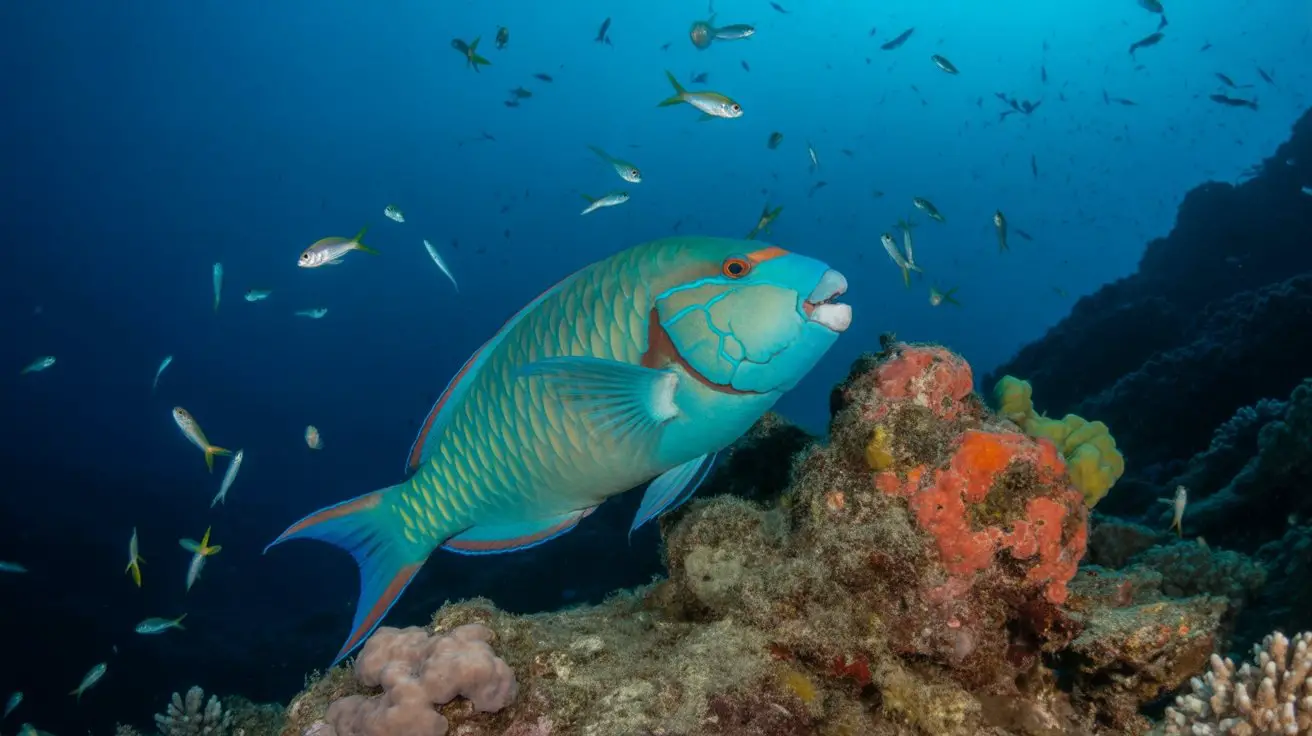
Since parrotfish populations face such extensive anthropogenic pressures, marine biologists have implemented multi-tiered conservation frameworks that target both species-specific protection and ecosystem-wide resilience.
You’ll find these strategies integrate habitat restoration with regulatory enforcement mechanisms.
Current conservation methodologies include:
- Marine Protected Areas (MPAs) – Establishing no-take zones where fishing restrictions preserve critical spawning aggregation sites and feeding territories.
- Fisheries management protocols – Implementing size limits, seasonal closures, and gear restrictions to maintain sustainable harvest rates below maximum sustainable yield thresholds.
- Habitat restoration initiatives – Coral transplantation programs and water quality improvement projects that enhance benthic community structure and parrotfish foraging efficiency.
You’re observing measurable population recovery rates in regions where thorough protection strategies achieve 70% compliance levels, demonstrating the efficacy of integrated conservation approaches. Additionally, marine protected areas play a crucial role in supporting the recovery of parrotfish populations by providing refuge from overfishing and habitat degradation.
The Future of Coral Reef Ecosystems
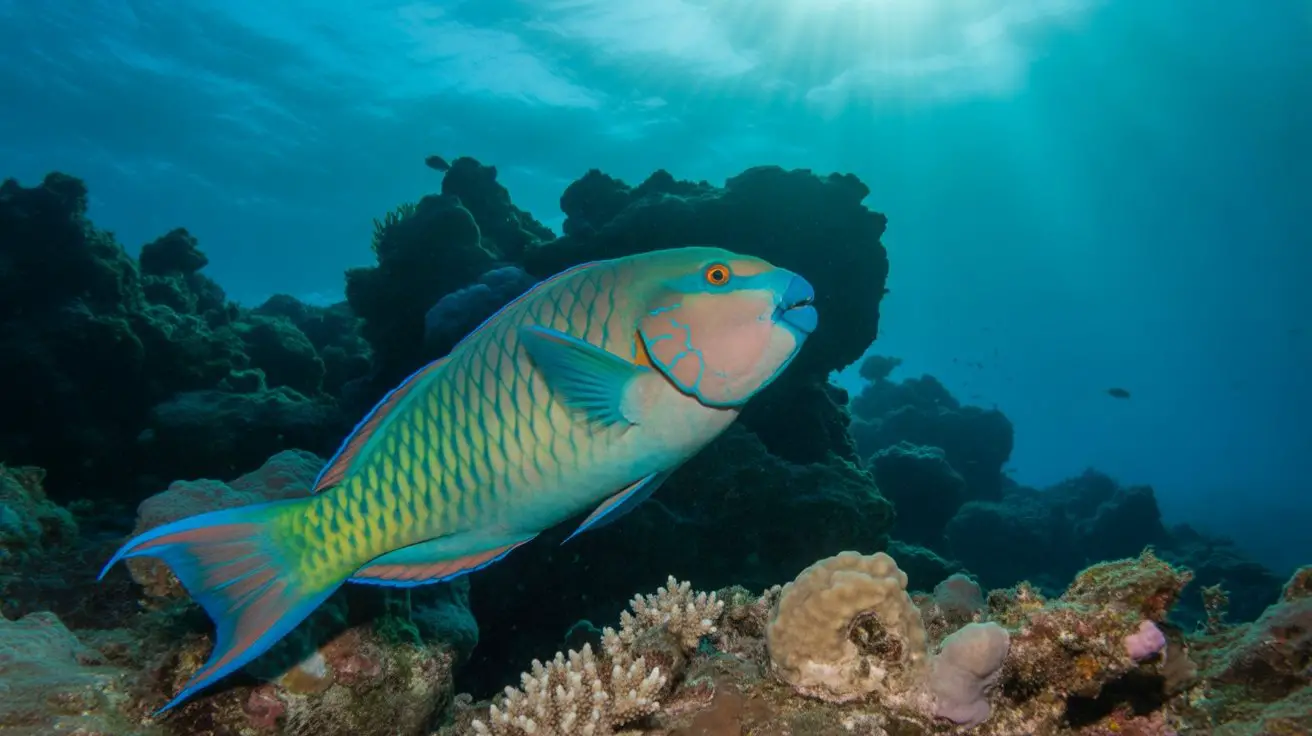
Looking beyond current conservation efforts, coral reef ecosystems face unprecedented challenges that’ll reshape their structure and function within the next several decades.
You’ll observe thermal bleaching events increasing in frequency, with 1.5°C warming triggering annual bleaching by 2050. Ocean acidification will reduce calcification rates by 30-40%, compromising coral skeletal development and parrotfish habitat complexity.
You’ll witness ecosystem phase shifts toward algae-dominated systems where parrotfish populations can’t maintain herbivory pressure against accelerated algal growth. Climate-resilient coral species will likely dominate future reefs, creating novel ecosystem assemblages.
You’ll need adaptive management strategies incorporating assisted gene flow, coral gardening, and parrotfish population enhancement. Predictive models suggest 10-30% reef survival under RCP8.5 scenarios, emphasizing critical intervention windows for maintaining parrotfish-coral relationships. Furthermore, the ongoing impacts of ocean acidification on coral reefs necessitate urgent action to mitigate further degradation and ensure ecosystem resilience.
Conclusion
You’ll find that parrotfish populations decline coincidentally with coral reef degradation rates exceeding 2.8% annually. When you examine bioerosion data, these species generate approximately 840kg of sand per hectare yearly—yet overfishing reduces their densities by 67% in unprotected areas. You’re witnessing synchronized ecosystem collapse: as parrotfish biomass decreases below 75kg/hectare, macroalgal cover increases exponentially. Your conservation interventions must target fishing quotas and marine protected areas simultaneously to restore ideal grazer-to-coral ratios.
